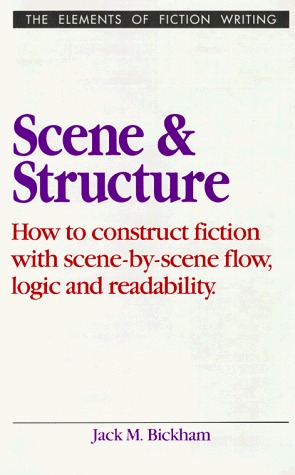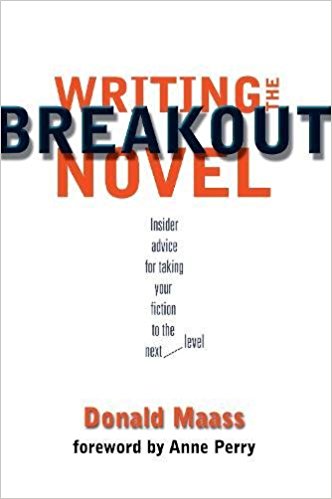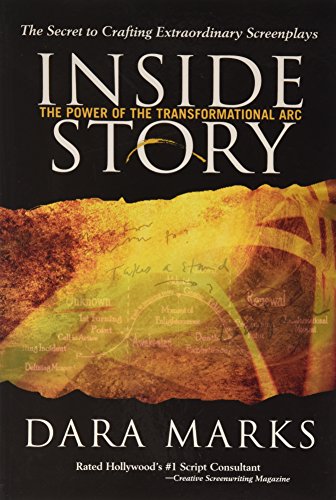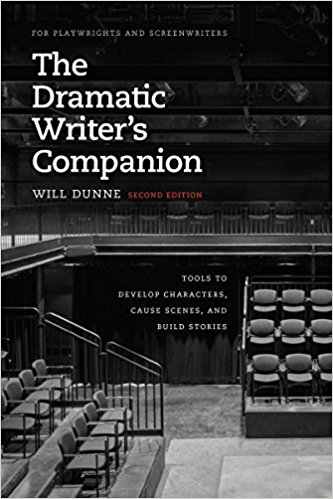This page contains affiliate links. Full disclosure here.
I like craft books that tell me HOW to do things without much fluff. To that end, here are my favorite craft books, organized by topic.
Concept
Writing the Breakout Novel by Donald Maass
A “High” concept is one of those things craft gurus readily recognize when they see it, but can’t always helpfully define, let alone explain in a way that enables you to create one. Not so with Writing the Breakout Novel. This book has a 28-page chapter on how to enhance your concept.
If you want more, Maass has a Workbook version of WtBN, but (and?) I’d check out the predecessor to WtBN, Writing the Blockbuster Novel by Albert Zuckerman, which also has a chapter on high concept elements. If you’ve read one of these books, reading the other will strangely feel like an echo even though they’re distinct enough to both be worth while. In other words, they both cover “High Concept” and “Larger-Than-Life Characters” and the like, but the techniques they suggest to achieve these things are different.
Plot
Sizzling Story Outlines by H. R. D’Costa.
This book doesn’t make an appearance in the Plot post because it came out after I wrote that. But it’s probably better this way, because I would have quoted it A LOT. There’s very little fluff. It’s all practical, how-to goodness.
D’Costa starts you out by showing you how to turn your inspiration into a one-line synopsis. From there she shows you how to derive your First Plot Point/Break Into Act 2 from the one-liner, and then she helps you define the Inciting Incident, the Midpoint, the Break into Act 3 (or the Trough of Hell, as she calls it), and the Climax and Resolution. Add in four prescribed walks around the block, and suddenly you have an outline. Seriously. Her process is FAST. So if outlining takes you longer than you’d like it to, this book is for you.
It’s great on its own, but it’s even better if you supplement it with the books in D’Costa’s Story Structure Essentials series, which dive deeper into each of the major plot points, plus her book on stakes (plus the rest of the Iterative Outlining series, if you want to spot and resolve macro problems in the outline, before you start writing):
- Inciting Incident
- Midpoint Magic
- Trough of Hell
- Story Climax
- Solid Story Compass
- Sparkling Story Drafts
Stakes
Story Stakes by H. R. D’Costa
Also by D’Costa (what can I say, she’s clear and all-inclusive when it comes to the structure aspects of storytelling), this book includes a list of stakes types and a process for making sure your stakes escalate throughout your story, regardless of genre. Honestly, you can probably skip the post if you have this book. Nah, go ahead and read it. But if stakes is something you often don’t push far enough, you’ll probably like this book.
Theme
Inside Story by Dara Marks
This book leans more toward the character arc aspect of theme. She takes you through determining your subject to developing your thematic point of view, to showing you how the external plot parallel’s the character’s internal journey. And that’s just Part 1. In Part 2 she shows you exactly how to SHOW your theme. Great stuff.
Character
The Dramatic Writer’s Companion by Will Dunne
This is another book that makes few, if any, appearances in the posts, but that’s because it’s not focused on telling us what craft techniques are and what elements said techniques should include. Instead, Mr. Dunne, a playwright, gives us thought-provoking exercises that help us develop our characters (and scenes and stories) so that they embody those techniques and, best of all, help us find ways to show our characters on the stage (of the page).
If you like this book, Dunne’s also got a follow-up book with even more exercises for developing Character, Scene and Story.
Scenes
 Scene & Structure by Jack Bickham
Scene & Structure by Jack Bickham
Lots of people write about scenes, but I’ve only found a few gurus whose books actually teach you how to write one, and most of those draw on the work of Dwight Swain, which is good, but not as clear as the work of Swain’s student Jack Bickham. If you need to hone your scene craft fundamentals, get yourself a copy of Jack Bickham’s Scene and Structure. It’ll walk you through cause and effect, action/reaction units, scene structure, scene questions and more.
 Craft of Scene Writing by Jim Mercurio
Craft of Scene Writing by Jim Mercurio
If you’ve got your fundamentals under hand and want to take your scene craft to the next level, check out Jim Mercurio’s Craft of Scene Writing. The introduction alone is illuminating, and then he goes on to teach you how to escalate your beats, write effective reversals, and optimize your dialogue. And that’s just the first three chapters.
Revision
Coming Soon
FAVORITES STILL TO COME
- Voice
- Point of View
- Building and Maintaining Tension





